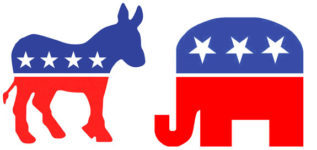What the Walkout Reveals about Politics at Sherwood and in MoCo

by Josh Averbach ’18
On Wednesday, February 21, about 1,300 students from six MCPS schools, according to The Washington Post, left class to attend a protest in DC for stricter gun control in response to the February 14 Parkland, Florida shooting (there is a separate county-wide walkout set to occur on March 14). Sherwood was not one of those six schools. While Sherwood students will attend the March 14 event, their non-participation in that initial burst of left-leaning activism illuminates the differences in political culture at high schools in different parts of the county.
The six schools–Richard Montgomery, B-CC, Einstein, Blair, Northwood, and Wootton–all are located in population-dense areas in central and southern Montgomery County. These places on the doorstep of a major city are largely liberal (as locales like these are in much of the country).
“RM is not unanimously liberal, but the majority of students are definitely liberal. In my experience, there hasn’t been much backlash against student-activists,” said Rebecca Lacoretz, a junior at Richard Montgomery who participated in the walkout. “Our administrators are mostly supportive of the causes we advocate for, and most teachers are supportive too. The only real ‘backlash’ we get is from students who don’t see the point of walking out of school or protesting in general [because] they don’t feel like it will make a difference,” she said.
Despite the fact that MCPS has officially taken a position against students walking out (Superintendent Jack Smith called leaving school a “significant safety risk” in an online letter on Thursday, February 22), Lacoretz said the protesters “don’t really care about the rules” because of the strength of their convictions.
Sherwood’s atmosphere is different from that of schools like Richard Montgomery. It may be more more purplish than it is deep-blue; a survey in this newspaper showed “a great variety of political opinions at Sherwood” and found that, “Students demonstrated liberal views on both domestic and social issues, while they were divided on education issues and showed conservative views regarding immigration issues.”
Sherwood’s staff also echoes the school’s mixed political sentiments. “From my experience, Sherwood teachers tend to be very much more moderate, which is, I believe a reflection of this community. You look at the socioeconomics of this community as well as the racial breakdown–everything yells ‘moderate,’” said social studies teacher Christine McKeldin. McKeldin views this as positive; moderation, she suggested, fosters mutual respect and the desire to find common ground between those who disagree.
Olney’s geography helps explain Sherwood’s political climate. It is further from DC and much less urban than the towns hosting any of the schools that participated in the walkout. Olney is located at a crossroads between the hustle-and-bustle of DC’s inner suburbs and the more-rural towns outside the metro area. One could drive 20 minutes from Olney, and, depending on which direction he or she chooses, end up in the busy downtown of Rockville or Gaithersburg or in a cornfield in Damascus or Howard County.
According to Johanna Berkson, who chairs the campaign of Andrew Friedson, a Democratic candidate for Montgomery County Council whose district stretches from urban Bethesda to rural Poolesville, more-conservative Montgomery-County residents and those of population-sparse areas are not generally less politically active. “People here are quite engaged in both parties,” she said.
Berkson credited Montgomery County’s location in “the backyard of the Federal Government” as a significant reason for the county’s heightened political engagement, and she pointed to the fact that much of the county is well-educated as a second important factor (although she stressed that the reasons behind people’s involvement or lack thereof are often more complex).
Berkson has also noticed strong opposition to President Trump in Montgomery County that transcends geographic or partisan lines (she emphasized that this is her own observation, not one based on polls or other concrete data). While campaigning, she has met “almost no one” who “supports President Trump’s behavior or his agenda.” This near-universal opposition, she said, is unique to Trump; she had not observed this kind of widespread disdain for prominent Republicans like former President George W. Bush or Governor Larry Hogan.